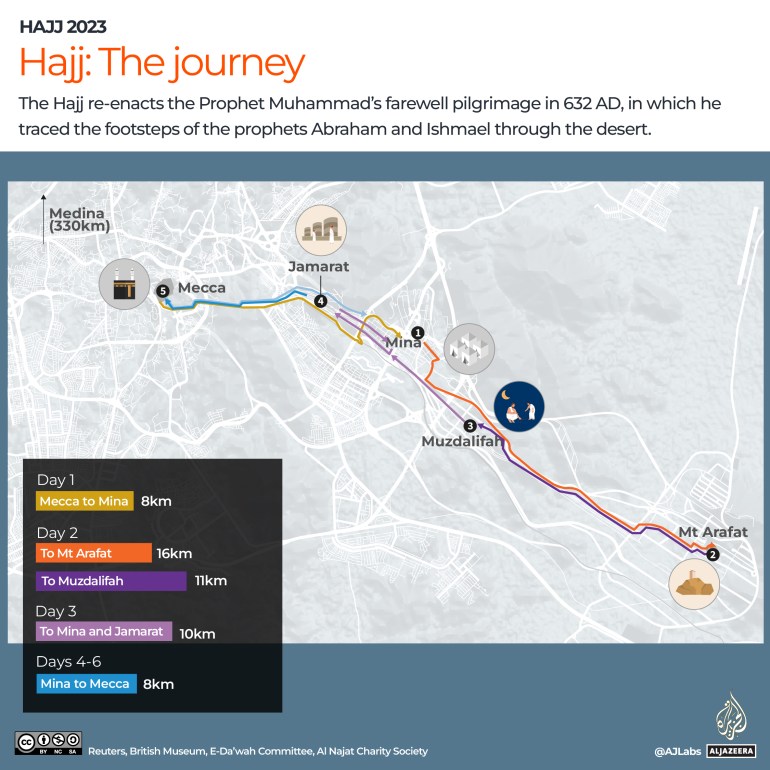
The pilgrimage of Hajj has begun as crowds of Muslims donning white robes circle the Kaaba, the cubed structure at the epicentre of Islam’s holiest site, their prayers ringing through the air.
The annual pilgrimage began on Sunday in Mecca, Saudi Arabia with the tawaf, the circling of the Kaaba, in an event that is expected to break attendance records.
“This year, we will witness the largest Hajj pilgrimage in history,” said an official at the Saudi Ministry of Hajj and Umrah.
More than 2.5 million Muslims are expected to take part, as coronavirus pandemic restrictions in place since 2020 have been fully relaxed.
That year, just 10,000 people were permitted to participate; 59,000 in 2021; and last year there was a cap of one million people.
“I am living the most beautiful days of my life,” Abdelazim, a 65-year-old Egyptian who saved for 20 years to pay the $6000 cost he needed to attend, told the AFP news agency at the site.
On Sunday evening, the pilgrims will begin making their way to Mina, about 8km (5 miles) from Mecca’s al-Masjid al-Haram, or the Grand Mosque, before they gather at Mount Arafat, where Prophet Muhammad is believed to have delivered his final sermon.
Mina is prepared for the pilgrims, with food supplies brought in and security forces deployed.
This year’s Hajj is a challenge, taking place in the nearly 45-degree-Celsius heat, the date for the pilgrimage dependent on the lunar calendar.
Saudi authorities said more than 32,000 health workers and thousands of ambulances are on standby to treat cases of heatstroke, dehydration and exhaustion.
The Islamic ritual is obligatory for every able-bodied Muslim adult who has the financial means to take part, forming one of the five pillars of the religion.
The physically and emotionally challenging experience is meant to cleanse followers of sin and bring them closer to God.
This year, Hajj is held between June 26 and July 1, with the celebration of Eid al-Adha taking place on June 28.
While an expensive ritual, the journey of Hajj often inspires hope for many, even if they hail from parts of the world besieged by war, poverty or occupation. Many save what little money they have for years, to be able to afford it.
Four groups of pilgrims left Gaza last week. Meanwhile, pilgrims from northwestern Syria streamed through border crossings with Turkey. And Yemenis boarded the first direct flight to Saudi Arabia since 2016 for the pilgrimage.







